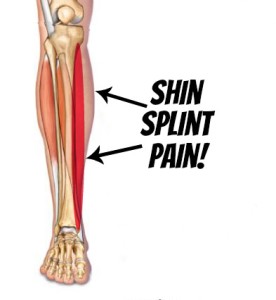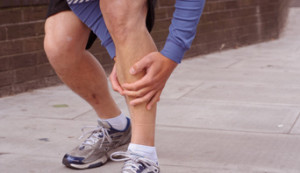Shin Splints Prevention and Treatment
I often get shin splints when I overtrain. Most especially when I increase my mileage too much too soon. Shin splints are easy to detect and they are easy to avoid as well. Below are some tips on how to avoid shin splits and the common treatments in case you’re feeling the pain right now.
Leg splitting aches are what describes shin splints. It is that pain on the inside of your shins that gradually intensifies as you work out. There might also be a swelling and will be aggravated if you touch it.
Shin splints occur on the muscles, tendons and bone tissue that surround your tibia. Usually the pain occurs along the inner borders of the tibia where the muscles are attached to the bone. That’s quite a lot of muscles and a lot of pain.
Like most sports injuries, shin splints are caused by over training and over use. It can also be the result of not warming up prior to a run and poor movement patterns of the leg and feet while running. Flat feet and high arched feet could also contribute to shin splints.
SHIN SPLINTS PREVENTION
Preventing shin splints from happening is possible. Here are some ways:
Cross-train. Try to alternate running with another lower impact sports such as swimming, rowing or cycling. This will prevent over exertion on your legs and allow you to focus on other muscles groups in your body.
Complete warm up before any activity. Make sure you give ample time to warm up. Shin splints often occur when the runner disregards the warm up stretches and zooms into the road immediately. It might take 5-10 minutes of your time, but warming up prevents injuries.
Wear the right kicks. Flat feet and high arched feet contribute to shin splints. Consider the shoes that you are using before you run. Running in the wrong shoes contributes to stress on your muscles. Learn the right shoes for your feet.
Decrease intensity and duration of your running. If you were able to run for an hour today, try to reduce it the next day. This way, your legs won’t get over worked or get over trained. Learn to hit the breaks from time to time. If you are preparing for a big running event, increase the intensity and duration of you work out gradually.
SHIN SPLINTS TREATMENT
Of course, it can’t be helped if you are already feeling the beginnings of shin splints. Here are some ways to treat shin splints.
Stop and rest. Shin splints are typically caused by overuse. Rest if you feel pain in your shins. If it has been chroming, stop running for a few weeks to give time for recovery and to eliminate the pain.
Compression socks or compression wrap. Wearing compression socks or putting on compression wrap on your shins may help in increasing the blood flow on the muscles of your legs. This in turn, reduces the chances of inflammation and swelling.
Cold or ice pack. Apply ice or a cold pack for 20 minutes 3-4 times a day to reduce swelling and pain. Do not apply the ice directly on the skin and stop applying ice if the skin becomes numb.
Drug-reduced pain. Ibuprofen and Naproxen are some of the medicines you can take to ease the pain and reduce the swelling.
See a specialist. See a doctor or a physical therapist when the pain becomes chronic and unbearable. The physical therapist will determine the exercises you can do to resolve shin splints. On the other hand, the doctor will determine if you needed a stronger meds or, in severe cases, surgery. Don’t be afraid to see them.
Physicians recommend resuming your running or any athletic pursuits if you are pain-free for 2 weeks. Otherwise, just relax and let it mend for a while. Remember, it is better to follow the preventive measures than regret it afterwards.
Post your thoughts and suggestions or share your experience in the comments below.
More about Running Injuries:


